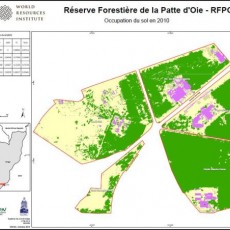General diagnostic training organized from 2005 to 2010: 141 is the number of training courses organized by OSFAC all types (vocational training, practical work, internships, and Memory TFC) from 2005 to 2010. The previous figure shows the percentage distribution of these formations for different types. Vocational courses come with 32% training organized from 2005 to 2010 followed by practical work with 25% of placements with 23% and finally briefs and TFC with 20% of trainees.
Total number of people trained from 2005 to 2010: A total of 1317 people have been trained by OSFAC during the period under study. The following figure shows the percentage distribution of all these people in relation to different types of training. Practical work, with 57% (755 people globally) are the first type, followed by professional training, with 36% (472 people); memories and Internships come in last place with 2% and 5% (28 and 62 people ).
Main beneficiaries of vocational training from 2005 to 2010: 56 institutions is the total number of institutions that have received training from 2005 to 2010. WCS with 38 people is the one who sent more people to separately monitor MECNT, INERA, ICCN with 34, 33 and 25 trainees.
Number of people trained per country from 2005 to 2010: The previous figure informs that 80% of people trained through vocational training are nationals of the DRC, followed by 10% to 7% for Gabon and Congo Brazzaville. Nationals of France, Britain and Equatorial Guinea with each 0.30% have benefited least training.
Since its inception, OSFAC provides capacity building for countries in Central Africa Geographic Information Systems, Remote Sensing and GPS. Between 2005 and 2010, 1317 people OSFAC formed as follows:
- 472 people or independent from the national and international institutions ;
- 755 people mainly universities of the University of Kinshasa, where the laboratory is located OSFAC GIS ;
- 35 people in academic internship lasting at least one month ;
- 27 people in professional internship of three to six months ;
- 23 people in thesis ;
- 5 people TFC (End of Cycle Works).
Overall, it can be noted that although the number of trained men is higher, women are increasingly to master these tools to the decision. OSFAC will increase its support to countries in the Congo Basin, particularly national institutions in charge of forests and universities.





















